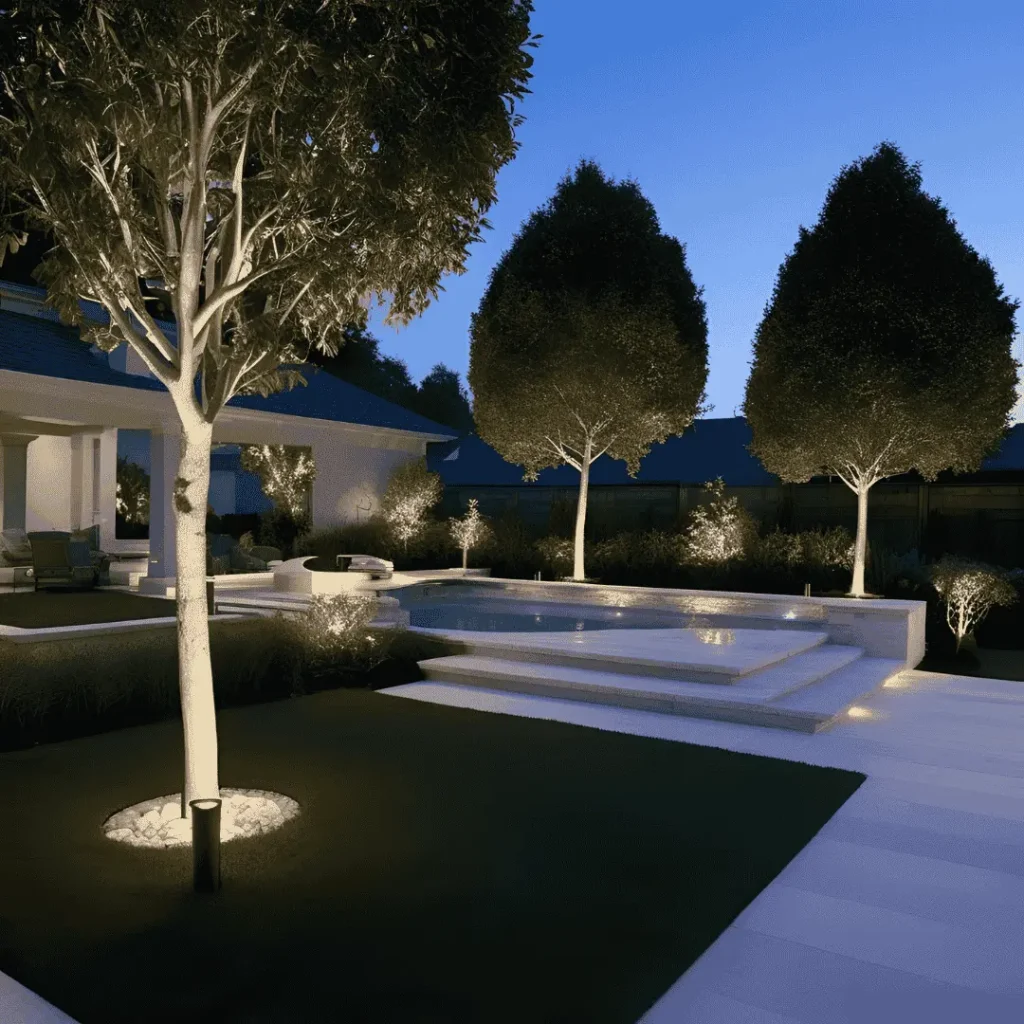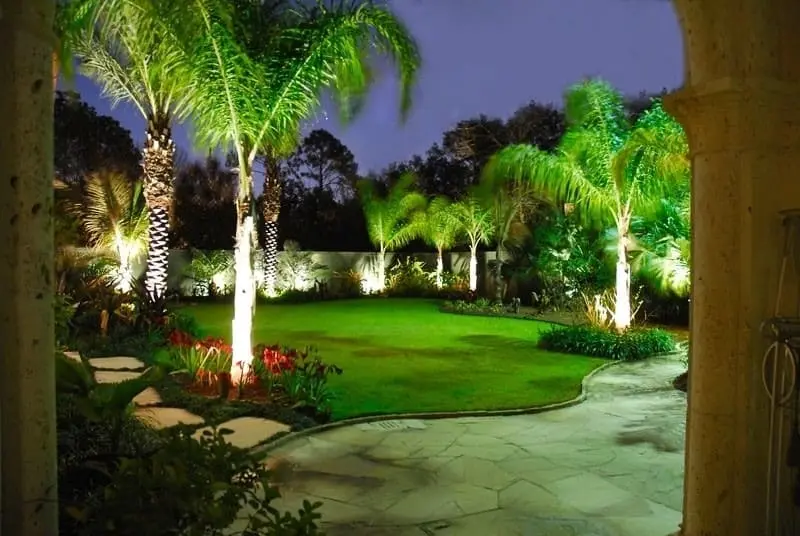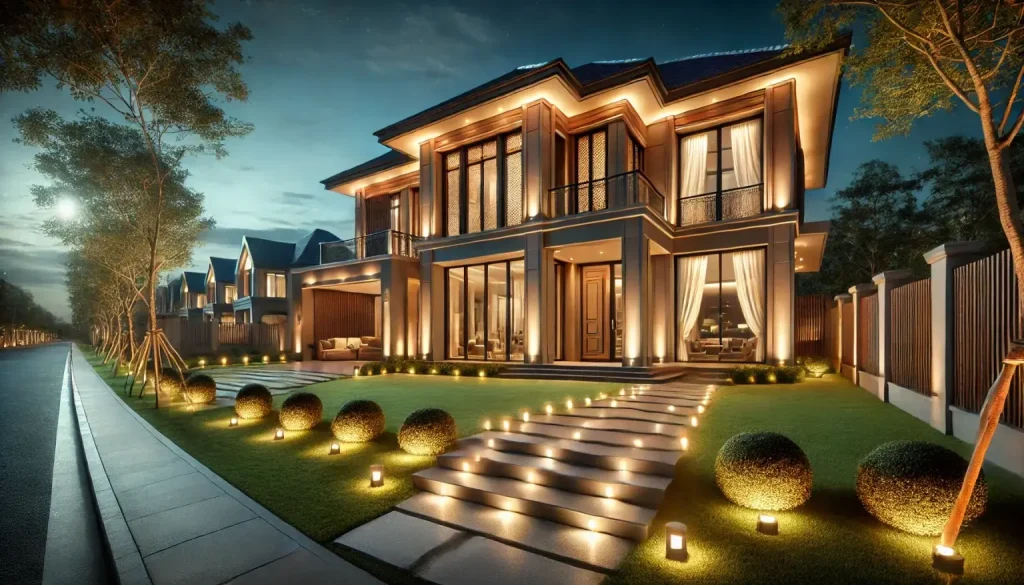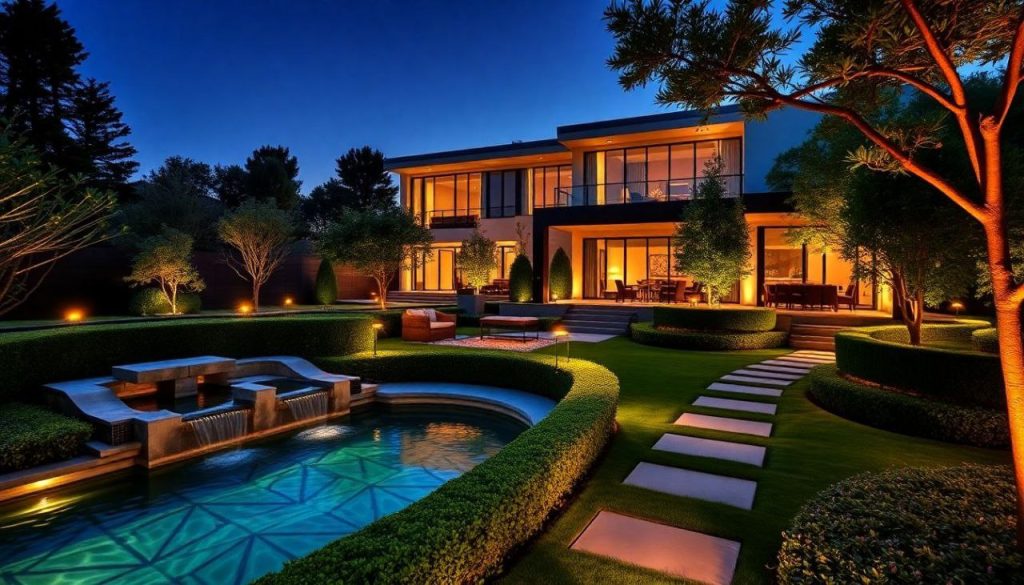In the world of luxury living, first impressions are everything—and the beauty of your outdoor space plays a pivotal role in that impression. While meticulously designed landscapes add value and charm, it’s the strategic use of lighting that transforms these spaces into elegant, functional extensions of the home. Landscape lighting is not merely about visibility; it’s an art form that weaves ambiance, security, and architectural aesthetics into a harmonious experience. For discerning homeowners and designers, integrating landscape lighting design ideas that exude a luxurious feel is key to elevating outdoor environments to their highest potential.
Design Principles for a Luxurious Effect
To achieve a truly luxurious outdoor lighting scheme, certain design principles must guide the planning and execution process. These include:
1. Balance
Balance ensures that lighting is evenly distributed across the landscape, avoiding overpowering brightness or neglected dark spots. A balanced lighting design provides symmetry and structure, whether illuminating a driveway, poolside, or garden pathway.
2. Scale
Scale refers to the proportion between light fixtures and the elements they illuminate. Large fixtures can overwhelm small garden features, while tiny lights may fail to highlight grand entrances or architectural columns. A luxury feel depends on choosing lighting that matches the scale of both the architecture and the natural surroundings.
3. Harmony
Harmony creates a seamless visual flow throughout the space. Luxury designs avoid jarring contrasts and instead aim for cohesion between light color, fixture style, and the natural palette of the environment.
Applying these principles ensures a sophisticated, layered look that enhances both aesthetics and usability.
Types of Landscape Lighting and Their Applications
A well-thought-out luxury landscape design incorporates various types of lighting, each serving distinct purposes:
1. Pathway Lights
- Application: Guide movement along walkways and garden paths.
- Pros: Improves safety and accessibility; adds subtle visual rhythm.
- Cons: Overuse can result in runway-like effects; must be placed with care.
2. Accent Lights
- Application: Highlight statues, water features, or architectural details.
- Pros: Brings attention to focal points; creates visual drama.
- Cons: Can be overpowering if not diffused correctly.
3. Wall Sconces
- Application: Mounted on exterior walls for entryways, patios, or garden walls.
- Pros: Adds elegance and definition to vertical structures.
- Cons: Requires careful installation to avoid uneven shadows.
4. Spotlights and Floodlights
Application: Used for large trees, sculptures, or façades.
Pros: Offers powerful illumination for statement features.
Cons: Excessive brightness can feel harsh without proper dimming or shielding.
By combining these elements, designers can create depth and dimension, drawing attention to both architectural and organic features.
Techniques to Achieve a Luxury Look
The magic of landscape lighting lies in the techniques used to position and direct light. Here are the most effective methods for creating a lavish ambiance:
1. Uplighting
Lights are placed at ground level and aimed upward to dramatize architectural columns or majestic trees. This technique adds grandeur and vertical interest, ideal for creating a luxurious, resort-like feel.
2. Downlighting
Lights are installed above and angled downward, mimicking natural moonlight. When used in pergolas or tall trees, it adds a serene and romantic ambiance, perfect for high-end garden lounges.
3. Silhouette Lighting
By placing lights behind objects, this method creates striking silhouettes of sculptures or plants. It’s subtle yet highly artistic, contributing to a refined, gallery-like outdoor space.
4. Shadowing
Lights in front of an object cast dramatic shadows on surfaces behind it. Ideal for enhancing texture and movement, shadowing adds dynamic flair to evening landscapes.
Enhance your gardens, pathways, and outdoor areas with our architecture lighting services – elegant, durable, and energy-efficient.
Premium Materials and Fixtures
A luxury landscape lighting system is only as good as its materials. High-end fixtures not only offer visual appeal but also withstand weather extremes. When selecting fixtures:
- Opt for corrosion-resistant metals like brass, copper, or marine-grade stainless steel.
- Choose frosted glass or high-quality lenses to diffuse light evenly and reduce glare.
- Prioritize LED options for energy efficiency, longer lifespan, and low maintenance.
ESCO Lights, for instance, offers a wide range of premium fixtures engineered for durability and designed with modern aesthetics that complement high-end homes.
The Role of Color and Ambiance
Color temperature plays a crucial role in setting the mood:
- Warm white (2700K–3000K) creates a welcoming, intimate ambiance—ideal for social spaces and garden seating areas.
- Neutral white (3500K–4000K) is perfect for pathways and general area lighting, striking a balance between visibility and coziness.
- Cool white (5000K+) is generally avoided in luxury settings, as it tends to create a clinical feel.
Layering different intensities and color temperatures across zones allows for mood transitions and depth, making the entire space feel curated and luxurious.
Seasonal and Occasional Adaptability
Luxury lighting designs should be as adaptable as the environment they inhabit. During summer, accentuate lush greenery and floral blooms with soft glows. In winter, shift focus to architectural features, evergreen plants, and textures enhanced by snow or frost. Integrate programmable timers and adjustable fixtures to modify lighting scenes based on:
- Holidays and festive seasons
- Weather conditions
- Evening events or private gatherings
This dynamic approach ensures that luxury remains constant, regardless of the season.
Smart Lighting for Modern Luxury
Technology has revolutionized landscape lighting. Smart lighting systems offer customization, convenience, and elegance through features such as:
- Automated schedules to control lighting based on time or events
- Mobile app control for real-time scene changes
- Voice assistant integration (Alexa, Google Assistant)
- Motion sensors for added security and energy efficiency
Real-World Examples of Luxury Lighting Designs
Case Study 1: Mediterranean Villa Garden
A coastal villa employed uplighting to highlight tall palm trees and archways, paired with pathway lights nestled in gravel beds. The result: a cinematic, resort-like outdoor space.
Case Study 2: Modern Minimalist Estate
This sleek home used linear LED strips under stair treads and benches, combined with wall-mounted sconces along stone walls. Shadowing and soft downlighting completed the modern luxe look.
Case Study 3: Traditional Courtyard in Dubai
Blending tradition and innovation, this courtyard incorporated bronze-finished lantern-style fixtures with smart controls, offering old-world charm with 21st-century technology.
Each example underscores how thoughtful lighting turns ordinary spaces into extraordinary experiences.
Conclusion
Landscape lighting is more than functional—it is transformational. When designed with intent and artistry, it elevates outdoor environments into sophisticated sanctuaries. From the foundational design principles of balance and harmony to the smart technology that redefines convenience, every element contributes to a luxurious feel that reflects personal taste and architectural excellence.
Ready to elevate your outdoor space with elegance and precision? Discover how ESCO Lights can help you bring your luxury landscape vision to life. With premium fixtures, innovative smart technology, and expert design support, ESCO Lights offers everything you need to create a timeless and luxurious outdoor ambiance. Visit ESCO Lights, contact us today and illuminate your world with unmatched style and sophistication.





